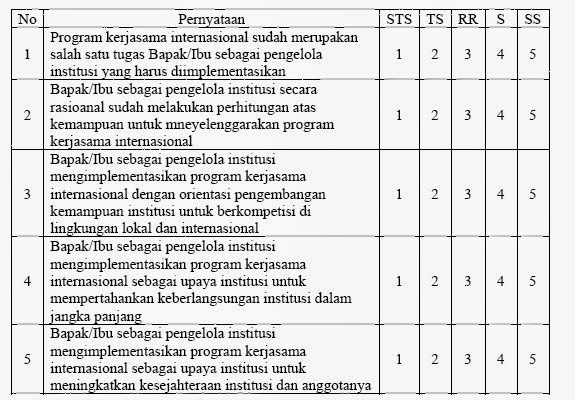In the world of research, our ability to understand and interpret data hinges on the tools we use to gather it. One such tool, often overlooked but incredibly powerful, is the measurement scale. Imagine trying to bake a cake without measuring cups or attempting to build furniture without a ruler. It would be nearly impossible to achieve consistent and meaningful results. Similarly, in research, well-constructed measurement scales are the rulers and measuring cups that allow us to quantify abstract concepts and gather reliable data.
Think about a concept like "customer satisfaction." It's not something we can physically touch or measure with a thermometer. Yet, it's a crucial factor for businesses to understand. This is where measurement scales come in. They provide a structured way to translate abstract ideas like satisfaction, happiness, or engagement into measurable data points. By carefully crafting questions and response options, we can gain insights into these complex concepts and use the data to make informed decisions.
Crafting an effective measurement scale is both an art and a science. It requires a deep understanding of the concept being measured, careful consideration of the target audience, and a commitment to ensuring the scale's accuracy and reliability. Imagine, for example, you're conducting research on employee motivation. A poorly designed scale might lead to ambiguous responses or fail to capture the nuances of different motivational factors. This can result in misleading data and inaccurate conclusions.
The process of creating a robust measurement scale often begins with clearly defining the concept you want to measure. What exactly do you mean by "employee motivation"? Is it about feeling valued, having opportunities for growth, or achieving specific goals? Once you have a clear definition, you can start to identify the different dimensions or aspects of that concept. For motivation, these dimensions might include factors like recognition, autonomy, and opportunities for advancement.
The next step is to translate these dimensions into specific questions or statements that your target audience can easily understand and respond to. This is where the art of wording comes into play. Questions should be clear, concise, and avoid jargon or technical terms that might confuse respondents. Additionally, the response options you provide are equally important. Common types of scales include Likert scales, where respondents indicate their level of agreement with a statement, and semantic differential scales, where respondents choose between two opposing adjectives that best describe their feelings or perceptions.
Advantages and Disadvantages of Effective Measurement Scales
Before diving into the intricacies of developing measurement scales, let's weigh the pros and cons:
| Advantages | Disadvantages |
|---|---|
| Provides quantifiable data on abstract concepts. | Potential for bias in question wording or response options. |
| Enables comparison and analysis of data. | Developing reliable and valid scales can be time-consuming. |
| Facilitates informed decision-making in research and practice. | May not fully capture the complexity of human experiences. |
Best Practices for Creating Effective Measurement Scales
Here are some key best practices to guide you in developing effective measurement scales:
1. Clearly Define Your Construct: Start by precisely defining the concept you're measuring. This will guide the entire scale development process.
2. Conduct a Literature Review: Explore existing research and scales related to your construct. This can provide valuable insights and inspiration.
3. Pilot Test Your Scale: Before launching your full-scale study, test your questions with a small group to identify any ambiguities or areas for improvement.
4. Ensure Validity and Reliability: Take steps to ensure your scale accurately measures what it intends to measure (validity) and produces consistent results over time (reliability).
5. Consider Cultural Context: Be mindful of cultural differences that might influence how respondents interpret questions and response options.
Frequently Asked Questions About Measurement Scales
Let's address some common queries about developing measurement scales:
Q: What are some common types of measurement scales?
A: Likert scales, semantic differential scales, Guttman scales, and Thurstone scales are widely used.
Q: How many response options should my scale have?
A: The optimal number varies, but 5-7 options are generally recommended for Likert scales.
Q: How can I ensure my scale is reliable?
A: Employ techniques like test-retest reliability, internal consistency, and inter-rater reliability.
Q: What resources can help me learn more about scale development?
A: Explore books on research methodology, consult academic journals, and utilize online resources dedicated to survey research.
Measurement scales are essential tools for researchers, providing a structured and systematic way to quantify abstract concepts. By carefully crafting these scales, we can unlock valuable insights into human behavior, attitudes, and perceptions, ultimately contributing to a deeper understanding of the world around us. While the process of developing effective scales requires time and effort, the benefits in terms of data quality and research impact are well worth the investment.
cara membuat skala penelitian - The Brass Coq
cara membuat skala penelitian - The Brass Coq
cara membuat skala penelitian - The Brass Coq
cara membuat skala penelitian - The Brass Coq
cara membuat skala penelitian - The Brass Coq
cara membuat skala penelitian - The Brass Coq
cara membuat skala penelitian - The Brass Coq
cara membuat skala penelitian - The Brass Coq
Contoh Data Nominal Ordinal Interval Dan Rasio Dalam Bentuk Tabel - The Brass Coq
cara membuat skala penelitian - The Brass Coq
cara membuat skala penelitian - The Brass Coq
cara membuat skala penelitian - The Brass Coq
cara membuat skala penelitian - The Brass Coq
cara membuat skala penelitian - The Brass Coq
cara membuat skala penelitian - The Brass Coq












